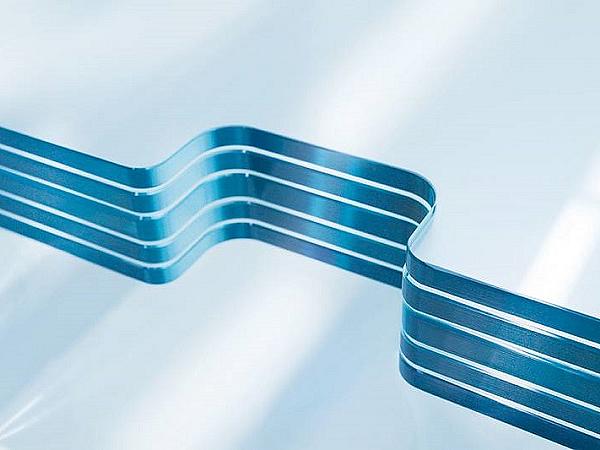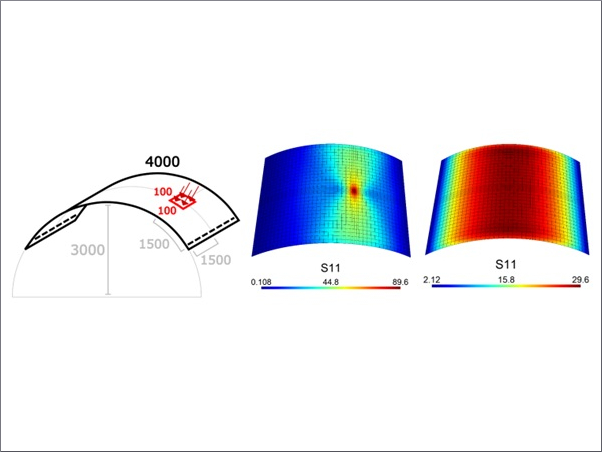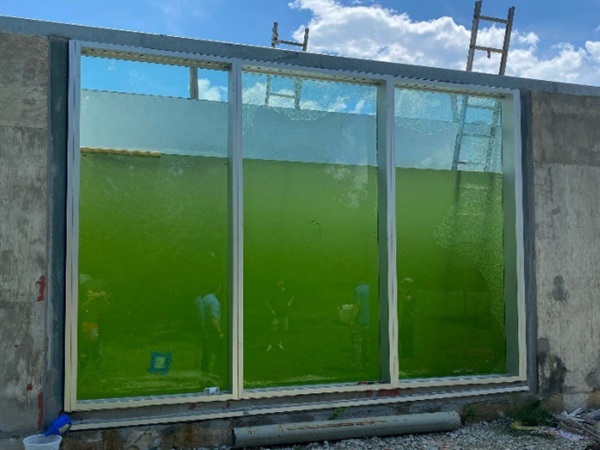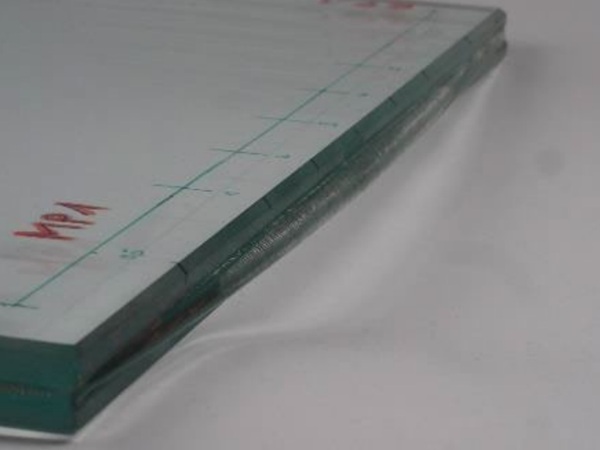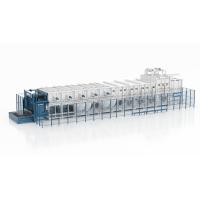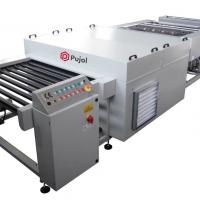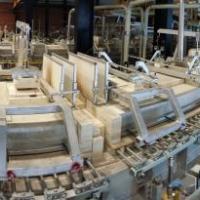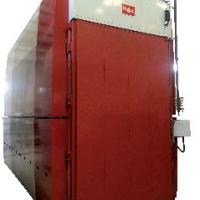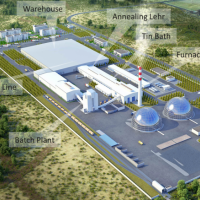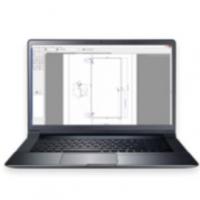As a result, the laminate can either bear greater loads or – at the same load – can be reduced in glass thickness without compromising safety.
STIFFNESS AND ELASTIC PROPERTIES
If two sheets of glass, lying on top of one another, are placed under load, they will start to bend (distort) independently. Displacement occurs between the two inner surfaces, which are in direct contact with each other. This is because one of the two surfaces is being stretched while the other is being compressed. If both sheets are laminated with an adhesive polymer interlayer, this must be able to internally compensate for the distortional differences (i.e. absorb shear forces).
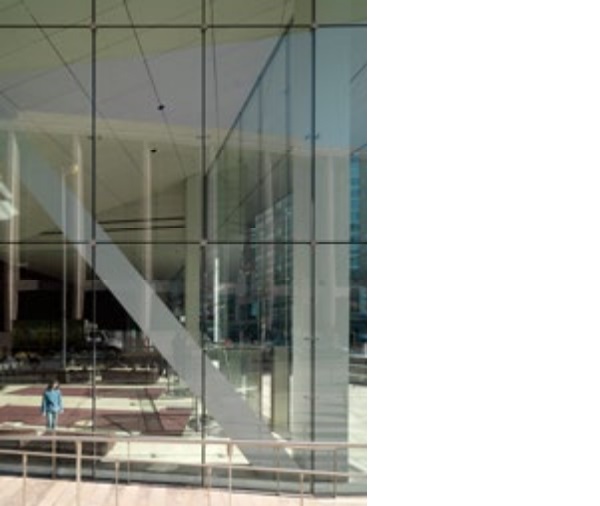
HOW ARE STIFFNESS AND ELASTICITY MEASURED?
Most laminated safety glass interlayers are viscoelastic. Viscoelasticity is the property of materials that exhibit both viscous and elastic characteristics when undergoing deformation. Viscous materials resist shear flow and strain linearly with time when a stress is applied. Elastic materials strain when stretched and quickly return to their original state once the stress is removed. Viscoelastic materials therefore have elements of both of these properties and as such exhibit time-dependent strain.
Important materials design values for the calculation of stresses and deformations are represented by the elastic constants, i.e. the modulus of elasticity (Young’s Modulus) and Poisson’s ratio. The modulus of elasticity, which by definition can be used as a direct comparison parameter for material stiffness, shows a dependence on the material and temperature.
Shear modulus or modulus of rigidity is defined as the ratio of shear stress to the shear strain. Shear modulus’ derived SI unit is the pascal (Pa), although it is normally expressed in Megapascals (MPa), or in thousands of pounds per square inch (ksi).
The shear modulus is always positive. Young’s Modulus describes the material’s response to linear strain. The shear modulus describes the material’s response to shearing strains.
Stiffness (Young’s Modulus and shear modulus) and Poisson ratio vary as a function of temperature and load duration (creep).
For designers of architectural glazing, it is therefore important to assess the likelihood of achieving full design load at the design temperature and load duration. How can structural designers ensure that the specified laminated safety glass interlayer is capable of meeting the design specification and building codes? The appropriate elastic property values need to be selected for the design case and assigned to an effective elastic interlayer. Kuraray can provide technical support and guidance here.
COMPARISON OF SHORT-TERM STIFFNESS AND STRENGTH OF BUTACITE® AND SENTRYGLAS® INTERLAYERS
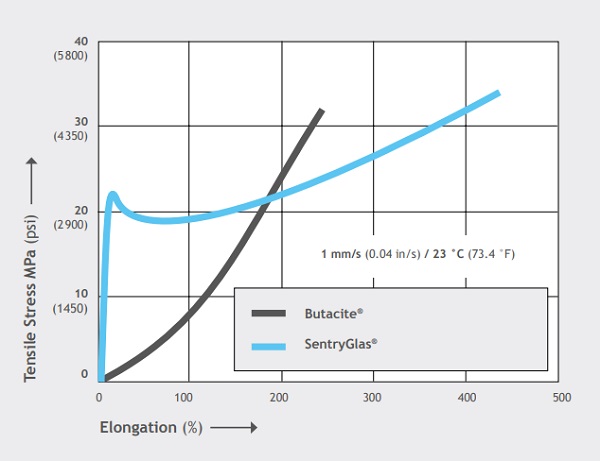
COMPARISON TESTS: SENTRYGLAS® VS BUTACITE® PVB INTERLAYERS
When exposed to sudden, short temporary loads, PVB interlayers such as Butacite® are able to internally compensate for the distortional differences (i.e. absorb shear forces) due to the glass sheets. Therefore, laminated safety glass produced with PVB interlayer provides excellent protection against, for example, the effects of vandalism, hurricanes or explosions. However, standard PVB is a soft polymer that starts to creep under long-term loads. As a result, two glass sheets laminated together using PVB – and exposed to a long-term flexural load – behave in exactly the same way as two sheets that have not been joined together. Therefore, static calculations to date only consider the properties of the glass components and not of the overall laminate coupling effect of laminated safety glass.
EFFECT UNDER BENDING LOAD
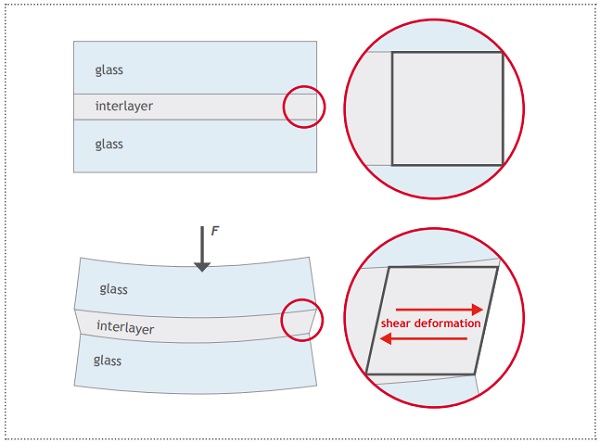
Laminated safety glass with SentryGlas® interlayers react quite differently to PVB interlayers. In tensile tests, the strength of SentryGlas® is considerably higher than PVB. In addition, the stiffness of SentryGlas® is up to 100 times greater than PVB.
STIFFNESS (SHEAR MODULUS) OF BUTACITE® PVB AND SENTRYGLAS® INTERLAYERS AT ROOM AND ELEVATED TEMPERATURES
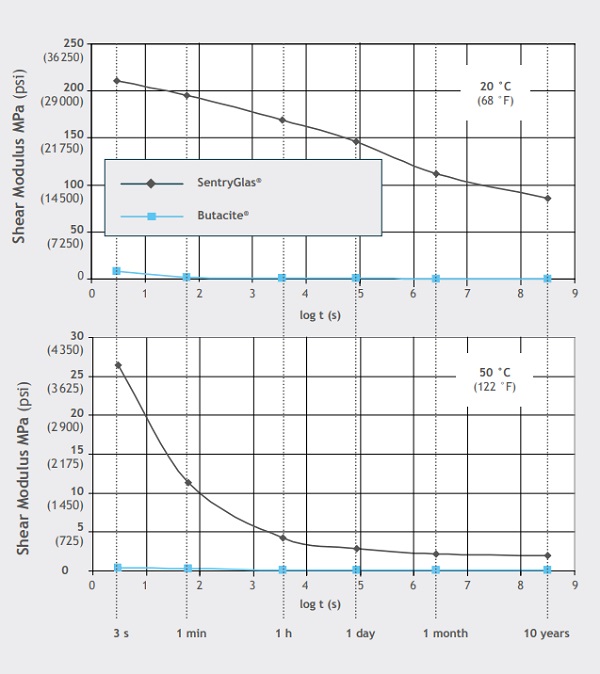
When designing static-loaded laminated glass panels, structural engineers must consider the changes in the mechanical properties and behavior of the interlayer, in particular, the constraints when using PVB rather than SentryGlas® ionoplast interlayer.
In order to evaluate the elastic properties of laminated safety glass interlayers over a range of specific test temperatures and load duration (time), Kuraray Interlayer Solutions has conducted a series of tests on SentryGlas® (SG5000) interlayers, using dynamic mechanical analysis and creep tests (according to ASTM D 4065). In these tests, the interlayer was subjected to a specific load at different temperatures from 10 °C (50 °F) up to 80 °C (176 °F) for a duration of time ranging from 1 second up to 10 years. As well as internal tests by Kuraray Interlayer Solutions, external independent tests have also been conducted, including comparison tests of SentryGlas®, PVB and monolithic/ tempered glass.
RESULTS
The results of all two sets of tests consistently showed that the rate of deflection of laminated safety glass with SentryGlas® was less than half of that with the PVB interlayer, and that this rate of deflection is similar to – or even less than – that recorded with the monolithic sheet. Mechanical tension accumulated in the glass was correspondingly lower.
CONCLUSIONS
The test results above (and subsequent tests) show that the stiffness of SentryGlas® interlayer is so high that there is an almost perfect transfer of load between the glass sheets. This applies to a wide temperature range and also under long-term conditions. This means it is possible to produce high load-bearing laminates from SentryGlas® with exceptional performance/weight ratio.
SIGNIFICANT BENEFITS
Compared to PVB laminates, laminates with SentryGlas® provide significant opportunities for designers in the following areas:
- Reduction of glass thickness (often in the region of one to two standard glass thicknesses).
- Installation of larger glass panels at determined loads.
- Or, a reduction in the number of fixing points for frameless glazing.
- Significant increase in post-glass breakage performance.
For users, this enables both a reduction in costs and a reduction in the overall weight of the glazing.
APPENDIX
ELASTIC PROPERTIES OF SENTRYGLAS® SG5000 FOR STRUCTURAL CALCULATIONS
Data has been evaluated according to ASTM.
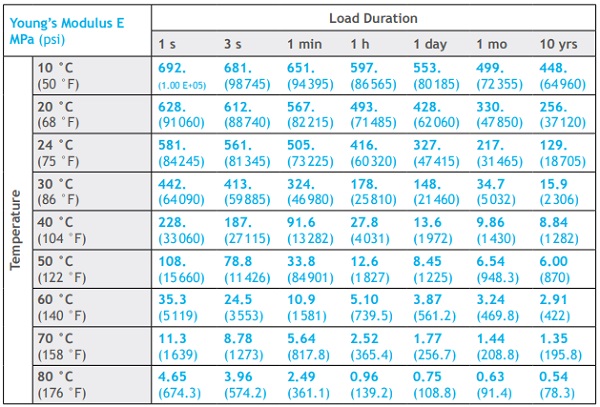
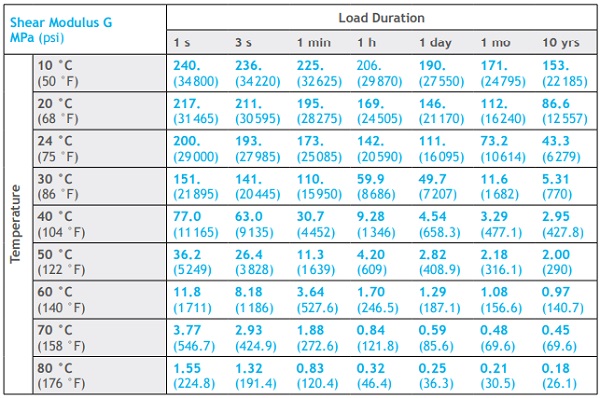
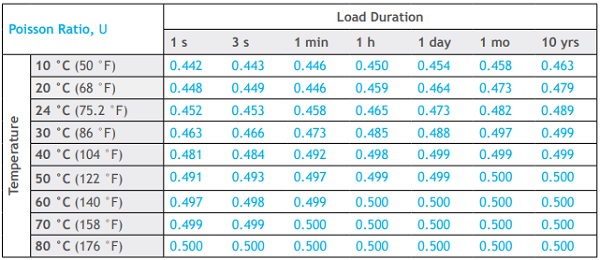
For further information about SentryGlas®, please visit www.sentryglas.com.

